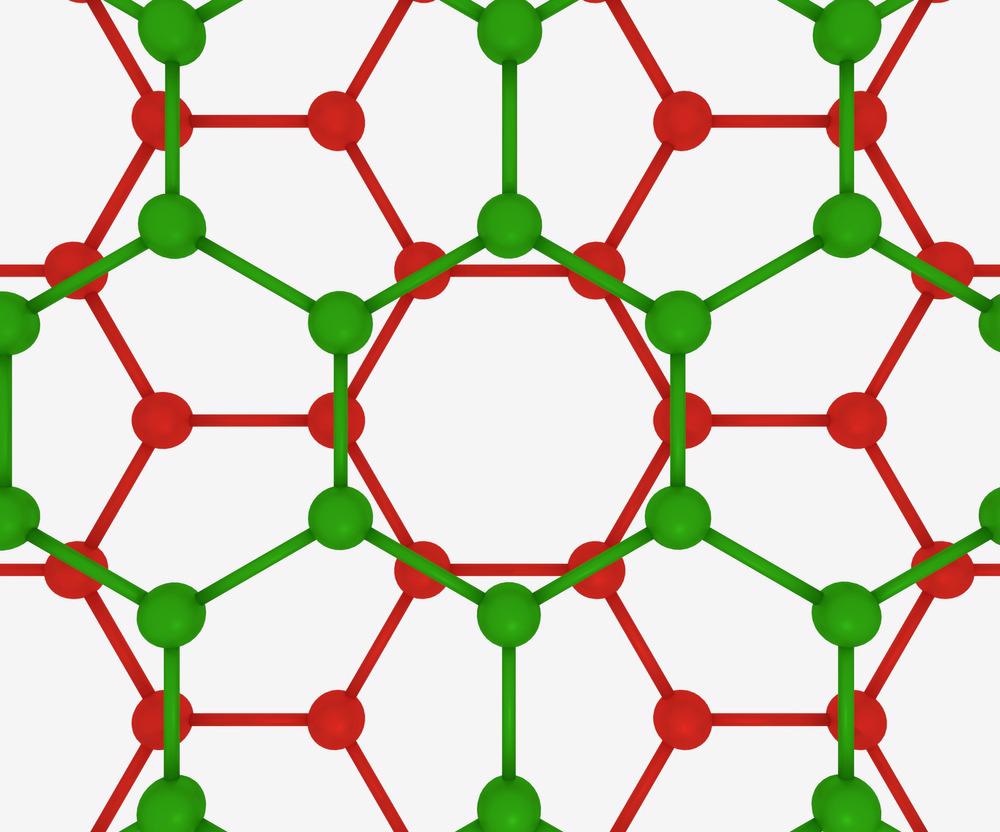Scientists are looking for ways to tune the properties of a material by doping or by changing chemical composition. This article focuses on Twistronics, a novel field of tuning the properties of materials to achieve desired electrical, photonic, and magnetic properties.

Image Credit: MZinchenko/Shutterstock.com
Twistronics: The Science Behind It
Typically, modifying the chemical composition of conventional materials to achieve various electrical properties requires doping. However, a 2018 study by Pablo Jarillo-Herrero and colleagues at the Massachusetts Institute of Technology (MIT) on the discovery of 'twistronics' ushered an overnight boom in the field of nanotechnology.
Twistronics is the study of how the twist angle (θ) between two layers of a two-dimensional material can modify its electrical, optical, and magnetic properties. The scientists employed the technology for the first time to make "magic-angle graphene" which behaves like a high-temperature superconductor.
At 1.7K, they confirmed the presence of superconductivity in bilayer graphene by rotating one layer by an angle of 1.1 relative to the other, resulting in a moiré pattern.
Each graphene layer has no particular electrical properties on its own. The twist, however, drastically altered the bilayer's properties, first transforming it into an insulator and then, with the introduction of a greater electric field, into a superconductor.
The Magic Angle in Twistronics
While the mysteries surrounding the magic angle remained unsolved, Dr. Jiang-Xiazi Lin and a team of Brown University researchers recently discovered that the magic angle twisted bilayer graphene (MATBL) is capable of creating both superconductivity and ferromagnetism.
The researchers layered a few layers of WSe2 crystal on top of MATBG. This configuration causes spin-orbit coupling at the interface, resulting in ferromagnetism, which could be exploited in quantum memory applications.
Following the reports on superconductivity in bilayer graphene, researchers worldwide began investigating three or more layers of graphene in the hopes of achieving superconductivity at different magic angles, or even at room temperature.
The superconductivity in magic-angle twisted trilayer graphene is created by stacking three layers of graphene and rotating the central layer by 1.57° (magic angle) w.r.t. outer layers
Progress in the Direction of Twistronics
Until previously, researchers had to create a whole new device for each distinct twist angle, which often required the fabrication of many devices.
Dr. Cory Dean and his Columbia University team, on the other hand, were able to create a single device whose layers may continually spin locally while measuring its electronic properties.
The researchers created a ratable heterostructure device in the shape of a gear for this study. They mechanically pick up this nano-sized boron nitride gear and lay it on top of graphene. The team also used an atomic force microscope to drive forward one of the gear's arms, forcing it to revolve.
Notably, they revealed that the energy gap found in graphene is adjustable, and that it can be turned on or off on demand simply by adjusting the angle between the layers.
Furthermore, Dr. Andrea Alu and a team of researchers from the Advanced Science Research Centre in New York used the twistronics concept to modify the flow of light.
The researchers prevented optical diffraction and enabled light propagation in a tightly focused beam at chosen wavelengths by rotating two ultrathin layers of molybdenum trioxide at a specific angle.
Twistronics for Bulk Systems
Existing Twistronics methods rely on stacking thin individual monolayers of film, which is time-consuming. The question is if moiré-like phenomena can be detected in thicker, 3D filmlike structures at room temperature.
MIT scientists discovered that the optical characteristics of stacked, >100 nm thick hexagonal boron nitride (hBN) films could be continuously adjusted by their relative twist angles.
It was discovered that at room temperature the relative twist angles of stacked, thick hBN films can be used to constantly modify both the intensity and colour, with the intensity increasing by more than 40 times.
The findings pave the way for new ways to regulate the optical properties of thin films that go beyond the usual structures, particularly for applications in medicine, the environment, and information technology.
Future Perspective
Twistronics has opened the door to an entirely new field of study in which material properties can be changed merely by twisting material layers.
Electronic circuits, for example, are made up of a limited number of components such as metallic conductors, insulators, semiconductors, and magnetic elements. This method necessitates incorporating a number of different materials and can be a substantial engineering problem.
A single twistronic device that can be locally 'twisted' to actualize each of these components, on the other hand, could open up major new engineering possibilities.
Furthermore, twistronics could aid in the development of new switching technologies, such as tunable sensors and tunable electro-optical-based systems.
Exotic quantum phenomena such as correlated insulator phases, superconductivity, and ferromagnetic on twistronics are especially appealing to quantum physics.
Continue reading: What is Twisted Graphene?
References and Further Reading
Ribeiro-Palau, R., Zhang, C., Watanabe, K., Taniguchi, T., Hone, J. and Dean, C., (2018). Twistable electronics with dynamically rotatable heterostructures. Science, 361(6403), pp.690-693. Available at: https://www.science.org/doi/10.1126/science.aat6981
Lin, J., Zhang, Y., Morissette, E., Wang, Z., Liu, S., Rhodes, D., Watanabe, K., Taniguchi, T., Hone, J. and Li, J., (2022). Spin-orbit–driven ferromagnetism at half moiré filling in magic-angle twisted bilayer graphene. Science, 375(6579), pp.437-441. Available at: https://www.science.org/doi/10.1126/science.abh2889
Hu, G., Ou, Q., Si, G., Wu, Y., Wu, J., Dai, Z., Krasnok, A., Mazor, Y., Zhang, Q., Bao, Q., Qiu, C. and Alù, A., (2020) Topological polaritons and photonic magic angles in twisted α-MoO3 bilayers. Nature, 582(7811), pp.209-213. Available at: https://doi.org/10.1038/s41586-020-2359-9
Disclaimer: The views expressed here are those of the author expressed in their private capacity and do not necessarily represent the views of AZoM.com Limited T/A AZoNetwork the owner and operator of this website. This disclaimer forms part of the Terms and conditions of use of this website.